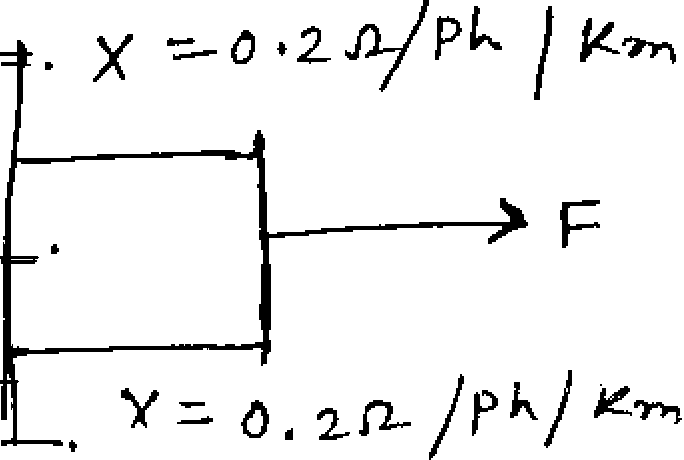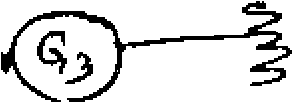Bengal Engineering and Science University 2006 B.E Electrical Engineering Power System-II - Question Paper
The ques. paper is with the attachment in pdf format.
Ex/BESUS/ EE- 602/ 06
B.E. (EE) Part-III 6th Semester Examination, 2006
Full Marks : 100
Time : 3 hours
Use separate answerscript _for each half. Answer SIX questions, taking THREE _from each half. Two marks are reserved_for neatness in each half.
FIRST HALF
Define the following (any four) :
(4x4)
i) Fusing factor of a fuse;
ii) Prospective and cutoff current of a fuse.
iii) Why do we prefer HRC fuse over ordinary rewirable fuse?
iv) What is an isolator? How does it differ from a circuit breaker?
v) What is RRRV for a circuit breaker? Explain its implication.
2. a) Analytically justify why resistance switching is preferred during interruption
of fault currents by a breaker.
b) What is the difference between the bulk oil circuit breaker and minimum oil circuit breaker?
c) What is the main advantage of auto-reclosing circuit breaker?
d) Explain what do you mean by "Rating of a Circuit Breaker". (6+2+2+6)
3. a) What is reflection coefficient in a transmission line? Find its expression for
voltage and current waves.
b) What is the reason for which it is considered that a HT induction motor is vulnerable to travelling waves in a HT transmission line when connected at the remote end of the line without any lighting arrester? Justify analytically.
c) The ends of two long transmission lines, A and C are connected by a cable B. The surge impedances of A, B and C are 500,70 and 600 ohms respectively. A rectangular voltage wave of 20 kV magnitude and of infinite length is initiated at A and travels to C. Determine the first and second voltages
4. a) Explain Beweley's Lattice diagram for repeated reflections citing an example.
b) What is a surge diverter?
c) An overhead line has characteristic impedance of 400 ohms and a voltage wave of v = 600 (e~ ' - e~ ) is travelling along it. At a certain point the overhead line terminates and the circuit is continued by two parallel overhead line transformer feeders each of which has a characteristic impedance of 400 ohms. The transformers are protected by surge diverters each of effective surge impedance of 50 ohms. Assuming the relative transformer characteristic impedance to be infinite, what is the maximum voltage which would initially appears across the feeder and of winding of each transformer? (6+2+8)
5. a) What are the chief advantages of HVDC transmission over EHV AC transmission?
b) What are different HVDC links? Explain briefly.
c) Why do we require reactive power compensating device at HVDC stations?
d) What is 'series reactive loss' in EHV AC lines and what is its implication?
(4x4)
6. a) Write down the merits and demerits of Corona.
b) Find the expression for a critical disruptive voltage of a single transmission line and hence prove that
V' = r.g0.S.logcfkV where g is the dielectric strength, 5 is the air density correction factor and other symbols have usual significance.
c) How will you reduce the Corona effect in a transmission line? (3+10+3)
7. a) Define transient, sub-transient and steady state reactance of an alternator
under three phase fault condition.
b) What is energy gap?
c) Determine the critical disruptive voltage and corona loss for a -3-phase line operating at HOkV which has conductor of 1.25 cm. diameter arranged in a 3.05 meter delta. Assume air density factor of 1.07 and the dielectric strength of air to be 21 kV/cm. (3+3+10)
8. a) What is symmetrical fault?
b) Prove that the reactance inside the alternator is a time varying parameter under short circuit condition.
c) Three 10 MVA generators each having a reactance of 0.2 p.u are operating in parallel. They feed a transmission line through a 30 MVA transformer having a p.u. reactance of 0.05. Find the fault MVA for a fault at the sending end of the line. (3+3+10)
9. Fig.A shows a generating station feeding a 132kV system. Determine the total fault current, fault level and fault current supplied by each alternator for a 3 ph fault at the receiving end bus. The line is 200km long. (16)

I
t,



"Z
T, = T2 = 120 MVA, 11/132 kV, X = 10% Fig.A T3:5OMVA, 11/132 kV, X = 8%
10. Write short notes on (any two) : (8+8)
a) Advantages of Interconnected Power System
b) Load-Frequency Control
c) D.C. off-set current in a 3-ph symmetrical fault.
|
Attachment: |
| Earning: Approval pending. |
